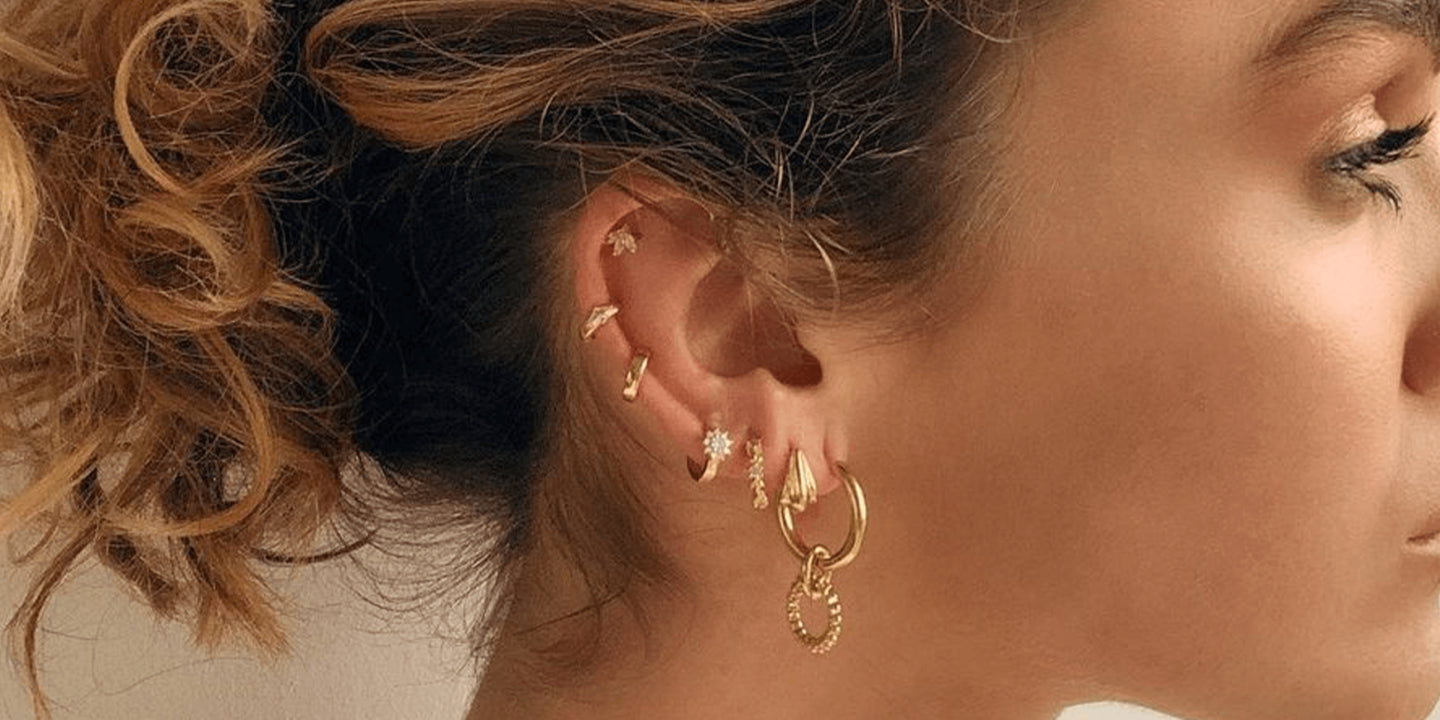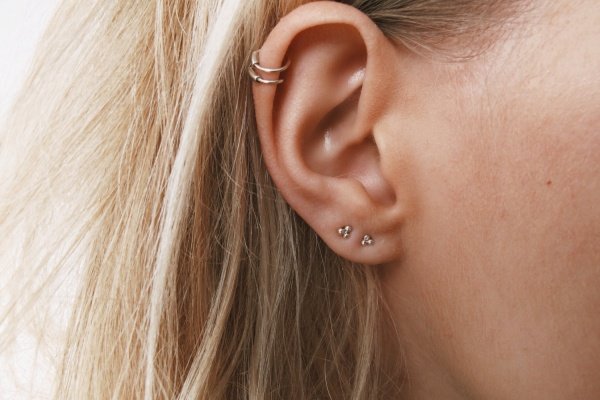Free shipping for USA orders over $65
Free shipping for USA orders over $65
Shop Jewelry
- 14K Gold Jewelry
- Sterling Silver Jewelry
- Titanium Jewelry
- Niobium Jewelry
- Belly Rings
- Cartilage Earrings
- Drop Earrings
- Eyebrow Rings
- Hoop Earrings
- Huggie Earrings
- Industrial Barbells
- Labret Studs | Flat back
- Lippy Loop Labret
- LGBTQ+ Pride Jewelry
- Nipple Jewelry
- Nose Jewelry
- Pregnancy Belly Ring
- Septum Jewelry
- Stud Earrings
- Tongue Barbells
- Fake Piercings
- Crescents / Pinchers
- Micro Barbell
- Dermals / Surface Barbells
- Toe Rings
- VCH Jewelry
- Belly Rings - Internally Threaded
- Body Jewelry Parts - Internally Threaded
- Captive Bead Ring - Internally Threaded
- Cartilage Barbells - Internally Threaded
- Curved Barbell - Internally Threaded
- Eyebrow Rings - Internally Threaded
- Horseshoe Circular Barbell - Internally Threaded
- Insertion Tapers - Internally Threaded
- Labret - Internally Threaded
- Nipple Jewelry - Internally Threaded
- Retainers - Internally Threaded
- Straight Barbell - Internally Threaded
- Tunnels - Internally Threaded
- 14K Gold Jewelry
- Sterling Silver Jewelry
- Titanium Jewelry
- Niobium Jewelry
- Belly Rings
- Cartilage Earrings
- Drop Earrings
- Eyebrow Rings
- Hoop Earrings
- Huggie Earrings
- Industrial Barbells
- Labret Studs | Flat back
- Lippy Loop Labret
- LGBTQ+ Pride Jewelry
- Nipple Jewelry
- Nose Jewelry
- Pregnancy Belly Ring
- Septum Jewelry
- Stud Earrings
- Tongue Barbells
- Fake Piercings
- Crescents / Pinchers
- Micro Barbell
- Dermals / Surface Barbells
- Toe Rings
- VCH Jewelry
- Belly Rings - Internally Threaded
- Body Jewelry Parts - Internally Threaded
- Captive Bead Ring - Internally Threaded
- Cartilage Barbells - Internally Threaded
- Curved Barbell - Internally Threaded
- Eyebrow Rings - Internally Threaded
- Horseshoe Circular Barbell - Internally Threaded
- Insertion Tapers - Internally Threaded
- Labret - Internally Threaded
- Nipple Jewelry - Internally Threaded
- Retainers - Internally Threaded
- Straight Barbell - Internally Threaded
- Tunnels - Internally Threaded
Daith Piercing : The Ultimate Guide To A Trendy and Stylish Way to Accessorize Your Ear
9 min read

A daith piercing is a type of ear cartilage piercing that passes through the crus of the helix, which is the innermost fold of cartilage above the ear canal. It is also known as a migraine piercing, a vagus nerve piercing, or a doth piercing. It is a popular and stylish piercing that can complement other ear piercings and create a curated ear look. However, it also has some potential benefits and risks that you should be aware of before getting one.
What are daith piercings and how are they done?
A daith piercing is a piercing of the fold of cartilage that’s just above the entrance to your ear canal. The name comes from the Hebrew word “da’at”, which means knowledge or wisdom. The piercing was first popularized by Erik Dakota, a renowned body piercer who introduced it in the 1990s.
A daith piercing is usually done with a straight hollow needle that goes through the cartilage from either outside in or inside out, depending on the piercer’s preference and technique. The needle is then followed by a piece of jewelry, usually a ring or a curved barbell, that fits snugly around the cartilage.
The procedure takes about 10 to 15 minutes, including the preparation and cleaning time. The pain level varies from person to person, but most people rate it as a 4 out of 10 on the pain scale, which means it is mild and below average. You may feel a sharp pinch and a pop sound as the needle goes through your cartilage, but this is short-lived.
The piercing should be done by a professional piercer who has experience with daith piercings and follows proper hygiene and safety standards. You should avoid using a piercing gun for a daith piercing, as this can cause more damage to your cartilage and increase the risk of infection.
What are the benefits of daith piercings?
One of the main reasons why people get daith piercings is because they like how they look. A daith piercing can enhance your appearance and express your personality. It can also complement other ear piercings and jewelry, creating a curated ear look.
Another reason why people get daith piercings is because they believe they can help with migraine relief. This is based on anecdotal reports and not on rigorous research. The theory is that daith piercings work similar to acupuncture and relieve pain by stimulating pressure points and nerve endings. In this case, that would be the vagus nerve, which extends from the base of your brain to the rest of your body.
Vagus nerve stimulation has already been proven to work on some other health conditions, like epilepsy and depression, but research into vagus nerve stimulation and benefits via piercing is still ongoing. Some people claim that their daith piercings have reduced or eliminated their migraine attacks, while others say they have not noticed any difference.
There is no scientific evidence to prove or disprove the efficacy of daith piercings for migraine treatment. However, if you suffer from migraines, you should consult with your doctor for proper diagnosis and treatment options.
What are the risks and complications of daith piercings?
Like any other piercing, a daith piercing comes with some risks and complications that you should be aware of before getting one. You should also follow proper aftercare and hygiene practices to ensure that your piercing heals well and stays healthy.
Some of the risks and complications of daith piercings are:
- Infection: Infection is always a risk with any piercing, but it’s especially important to avoid infection with a daith piercing because the piercing is located near the inner ear. If you develop an infection, it could lead to deafness, vertigo, or meningitis. Signs of infection include redness, swelling, pain, pus, fever, or foul odor. You should contact your piercer or doctor immediately if you notice any of these symptoms.
- Irritation: Irritation can occur if you touch, twist, or play with your jewelry, or if you expose it to harsh chemicals or cosmetics. Irritation can cause inflammation, bleeding, or scarring. You should avoid touching your piercing unless you are cleaning it, and use only gentle products around your ear.
- Swelling: Swelling is normal after a daith piercing, but it can also cause discomfort and pressure on your ear canal. You should avoid sleeping on your pierced side, as this can worsen the swelling. You can also use ice packs or anti-inflammatory drugs to reduce swelling.
- Snagging: Snagging can happen if your jewelry gets caught on your hair, clothing, or accessories. Snagging can cause trauma and damage to your piercing site. You should be careful when brushing your hair or wearing hats, headbands, or earphones. You should also choose jewelry that fits snugly around your cartilage and does not dangle or have sharp edges.
- Allergic reactions: Allergic reactions can occur if you are sensitive to the material of your jewelry. Allergic reactions can cause itching, rash, blisters, or swelling. You should choose jewelry that is made of high-quality materials that are hypoallergenic and biocompatible, such as titanium, niobium, gold, platinum, or glass.
- Tarnishing: Tarnishing can happen if your jewelry is made of poor-quality materials that are prone to oxidation or corrosion. Tarnishing can affect the appearance and durability of your jewelry. It can also cause discoloration or staining of your skin. You should choose jewelry that is made of high-quality materials that are resistant to tarnishing, such as titanium, niobium, gold, platinum, or glass.
How much do daith piercings cost and where can you get them done?
The cost of a daith piercing depends on several factors, such as:
- The location and reputation of the piercing studio
- The experience and skill of the piercer
- The type and quality of the jewelry
- The aftercare products and services
In general, you can expect to pay about $40 to $120 for both the procedure and the jewelry. However, this may vary depending on where you live and what options you choose.
You should always get your daith piercing done by a professional piercer who has experience with daith piercings and follows proper hygiene and safety standards. You should avoid getting your daith piercing done at a mall kiosk or a beauty salon that uses a piercing gun.
How to take care of your daith piercings and what to expect during healing?
A daith piercing can take up to 9 months to heal completely, depending on your individual healing rate and how well you take care of it. During this time, you should follow proper aftercare and hygiene practices to prevent infection and complications.
Some of the things you need to do after getting a daith piercing are:
- Clean your piercing twice a day with saline solution or a mild soap and warm water. Use a cotton ball or a q-tip to gently wipe away any crust or discharge around the jewelry. Do not use alcohol, hydrogen peroxide, or harsh chemicals, as they can dry out and irritate your piercing.
- Avoid touching, twisting, or playing with your jewelry, as this can introduce bacteria and dirt into your piercing and delay healing. Only touch your piercing when you are cleaning it, and always wash your hands before and after.
- Avoid sleeping on your pierced side, as this can put pressure on your jewelry and cause swelling, pain, and infection. You can use a travel pillow or a donut-shaped pillow to keep your ear off the pillow.
- Avoid swimming and submerging your piercing in water, as this can expose it to harmful bacteria and chemicals that can cause infection and irritation. Avoid swimming pools, hot tubs, lakes, oceans, baths, and showers until your piercing heals completely. If you have to get wet, cover your ear with a waterproof bandage or plastic wrap.
- Avoid makeup and hair products near your ear until your piercing heals completely. Makeup and hair products can clog up your piercing and cause infection and irritation. If you have long hair, keep it away from your ear by tying it back or using clips.
- Avoid changing your jewelry until your piercing heals completely. Changing your jewelry too soon can cause trauma and inflammation to your piercing site. You should wait at least two to three months before changing your jewelry for the first time.
- Monitor your piercing for any signs of infection or complications. These include redness, swelling, pain, pus, fever, or foul odor. If you notice any of these symptoms, contact your piercer or doctor immediately for advice and treatment.
During the healing process, you may experience some normal symptoms such as:
- Mild pain and tenderness
- Slight bleeding or bruising
- Itching and flaking
- White or clear discharge
These symptoms are usually temporary and will subside as your piercing heals. However, if they persist or worsen over time, you may have an infection or a complication that needs medical attention.
How to choose the best jewelry for your daith piercings?
The jewelry you choose for your daith piercings can affect not only how they look but also how they heal. You should consider several factors when choosing your jewelry, such as:
- The size: The size of your jewelry should match the size of your piercing hole. If it is too big or too small, it can cause irritation or migration. You should measure the thickness (gauge) and the diameter (length) of your jewelry before buying it. The most common gauge for daith piercings is 16g (1.2 mm), but some people may prefer 14g (1.6 mm) or 18g (1 mm). The most common diameter for daith piercings is 8 mm (5/16 inch), but some people may prefer 10 mm (3/8 inch) or 6 mm (1/4 inch).
- The type: The type of jewelry you choose should suit your anatomy and personal preference. The most common types of jewelry for daith piercings are rings or curved barbells. Rings are more versatile and can be worn in different ways,
-
such as a simple hoop, a heart-shaped ring, a pentagon ring, or a horseshoe circular barbell. Curved barbells are more discreet and can be worn with different ends, such as balls, spikes, gems, or charms.
-
The material: The material of your jewelry should be hypoallergenic and biocompatible, meaning it does not cause allergic reactions or irritation to your skin. The best materials for daith piercings are titanium, niobium, gold, platinum, or glass. You should avoid materials that are prone to oxidation or corrosion, such as silver, copper, brass, or nickel.
- The design: The design of your jewelry should suit your personal style and preference. You can choose from various colors, patterns, textures, or embellishments for your jewelry. You can also mix and match different types of jewelry for a unique look.
You should always buy your jewelry from reputable sources that offer high-quality products and guarantee their safety and durability. You should also consult with your piercer before changing your jewelry for the first time to make sure it fits properly and does not cause any problems.
What are some examples of products that are suitable for daith piercings?
If you are looking for some inspiration for your daith piercings, here are some examples of products that are suitable for daith piercings from https://rebelbod.com:
- 14K Gold Seamless Ring: This is a classic and elegant option for a daith piercing. It is made of solid 14K gold that is hypoallergenic and tarnish-resistant. It comes in different gauges and diameters to fit your piercing size. It is also seamless, meaning it has no visible closure or gap that can snag or irritate your piercing.
- Titanium Hinged Segment Ring: This is a versatile and easy-to-wear option for a daith piercing. It is made of titanium that is lightweight and biocompatible. It has a hinged segment that allows you to open and close it easily without tools. It comes in different gauges, diameters, and colors to suit your preference.
- Titanium Curved Barbell with Opal Balls: This is a colorful and sparkly option for a daith piercing. It is made of titanium that is durable and comfortable. It has two opal balls on each end that add some shine and glamour to your ear. It comes in different gauges, lengths, and opal colors to match your style.
- 14K Gold Heart Seamless Ring: This is a cute and romantic option for a daith piercing. It is made of solid 14K gold that is smooth and shiny. It has a heart-shaped ring that hugs your cartilage and shows off your love. It comes in different gauges and diameters to fit your piercing size.
- Titanium Curved Barbell with Prong Set CZ Gems: This is a dazzling and sophisticated option for a daith piercing. It is made of titanium that is strong and hypoallergenic. It has two cubic zirconia gems on each end that catch the light and make you stand out. It comes in different gauges, lengths, and gem colors to complement your look.
A daith piercing is a type of ear cartilage piercing that passes through the crus of the helix, which is the innermost fold of cartilage above the ear canal. It is also known as a migraine piercing, a vagus nerve piercing, or a doth piercing. It is a popular and stylish piercing that can complement other ear piercings and create a curated ear look.
RebelBod.com have a wide range of jewelry types, sizes, colors, and designs to suit your preference and style. You can browse the collection of jewelry for daith piercing here: https://rebelbod.com/collections/daith-earrings
You can also find more information on body piercing types here: https://rebelbod.com/collections/body-piercing-types
And more information on body jewelry types here: https://rebelbod.com/collections/body-jewelry-type
If you are looking for high-quality, affordable, and stylish jewelry for your piercing, you should check out RebelBod.com. RebelBod.com is an online store that specializes in body jewelry for all types of piercings. RebelBod.com have a wide range of jewelry types, sizes, materials, colors, and designs for your lobe piercing. Whether you want simple studs, fun hoops, cool rings, sleek barbells, bold plugs, or trendy tunnels, RebelBod.com has it all.
RebelBod.com offers jewelry that is made of hypoallergenic, non-porous, smooth, and easy to clean materials, such as titanium, surgical steel, gold, and glass. RebelBod.com also have jewelry that is made of acrylic, wood, stone, and silicone for healed piercing. RebelBod.com have jewelry that suits your skin tone, hair color, eye color, or outfit and jewelry that complements your personality and preferences.
RebelBod.com is your one-stop shop for all your body piercing jewelry needs. Visit RebelBod.com today and browse the amazing collection of jewelry for your body piercing!
Also in Body Piercing
Categories
Recent Articles
- Nose Ring vs Nose Stud: Which Nose Piercing Is Right for You?
- The Ultimate Guide on Hoop Earrings: Huggies, Wire Loop Earrings, Hinged Hoop Earrings, Fixed Bead, Rings Captive Bead, Rings
- Double Helix Piercing: How to Rock Two Hoops on Your Ear
- Double Ear Piercing: A Complete Guide - Everything You Need to Know
- Auricle Piercing : A Guide to This Stylish Cartilage Piercing
- Tragus Piercing: Everything You Need to Know About This Trendy Ear Piercing
- Ashley Piercing : Everything You Would Want To Know About This Unique And Stylish Lip Piercing
- Smiley Piercing: A Comprehensive Guide to This Oral Piercing
- Conch Piercing : Your Comprehensive Guide to A Beautiful Cartilage Ear Piercing
- Body Piercing Decisions : Considerations You Should Think About



